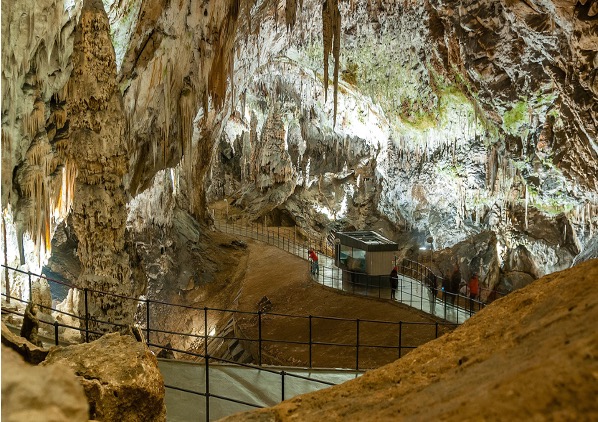Postojna Cave is a long “karst” cave system near Postojna, southwestern Slovenia. Karst topography is formed by the dissolution of soluble rocks such as limestone, dolomite, and gypsum. It is characterized by underground drainage systems with sinkholes and caves, carved by the Pivka River. It has taken millions of years to create this natural wonder, replete with beautiful stalagmites, stalactites, and formations called draperies that resemble folded curtains. This cavernous system is 15 miles long (24.12 kilometers) long and consists of four interconnected caves through the identical underground river; joining two of the main cave systems will make this the longest in Slovenia, and one of the lengthiest in all of Europe.
The caves are also home to the endemic olm, the largest troglodytic amphibian in the world. Our expedition through the caves includes a visit to the aquarium where olms can be observed. On January 30, 2016, a female olm at one cave location began to lay over 50 eggs, a rare event that led to global news about Postojna Cave, and its existence.
The cave was first described in the 17th century by the pioneer of karst phenomena, Johann Weikhard von Valvasor, although graffiti inside dating back to 1213, indicates a much older history. In 1818, when the cave was being prepared for a visit by Francis I, the first Emperor of the Austria-Hungary, a new area of the cave was discovered accidentally by local Luka Čeč (who became the first official guide). In 1819, Archduke Ferdinand visited the caves; this is when the caves became officially known as a sightseer destination. Electric lighting was added in 1884, preceding even Ljubljana, the capital of Carniola, and further enhanced the cave’s splendor. In the 1850s, the Austrian-Czech geographer Adolf Schmidl published the first comprehensive scientific overview of the Postojna caves and the Pivka Basin, which became a standard reference point in the study of speleologie.
Spelunkers, get your cameras ready for an unforgettable experience!
